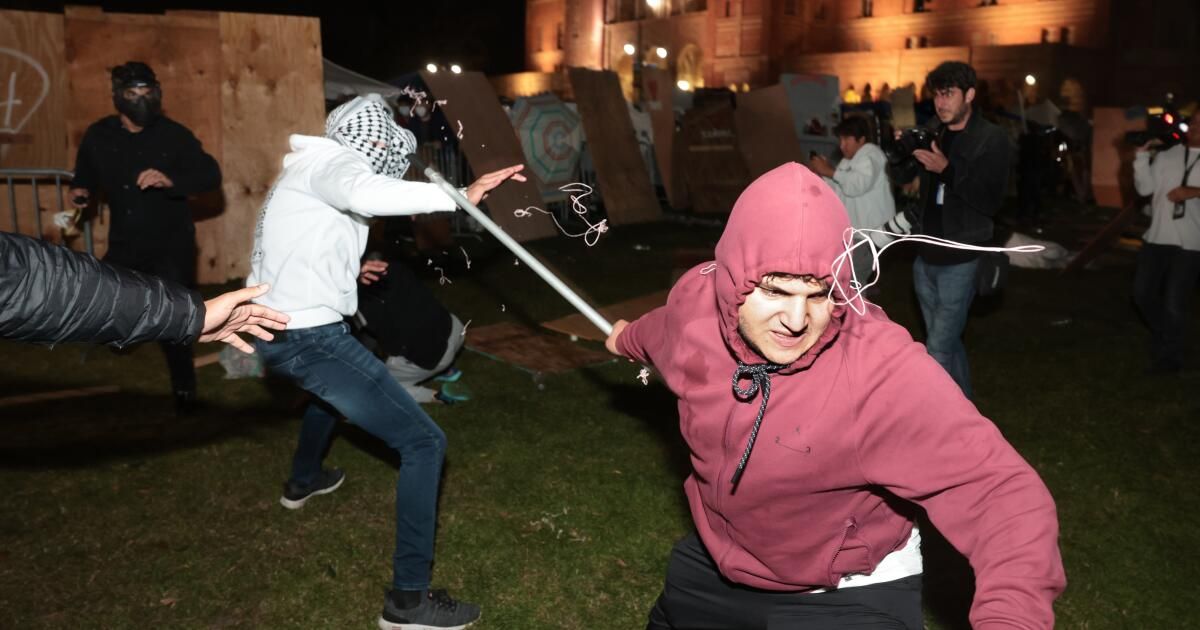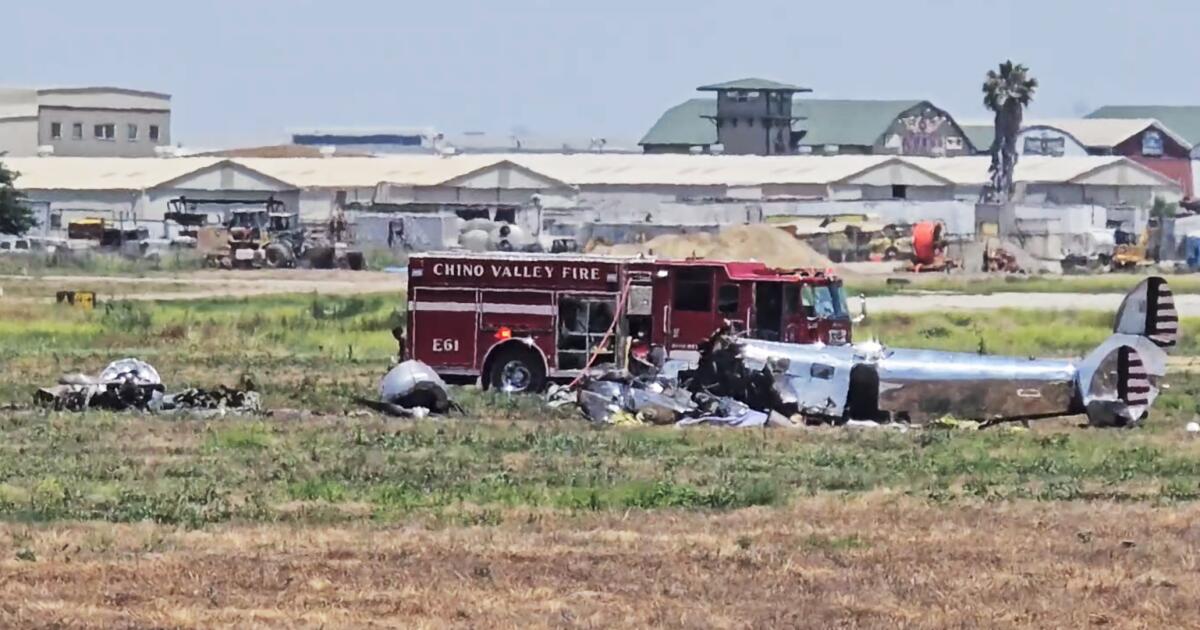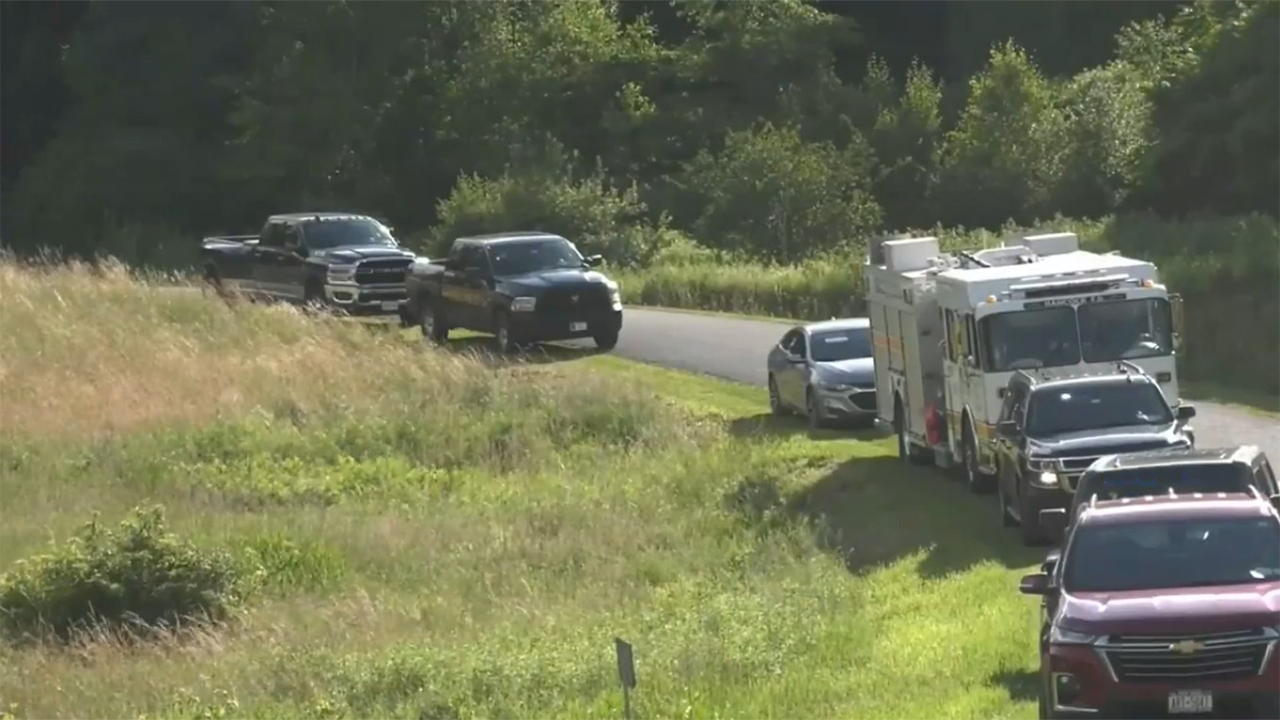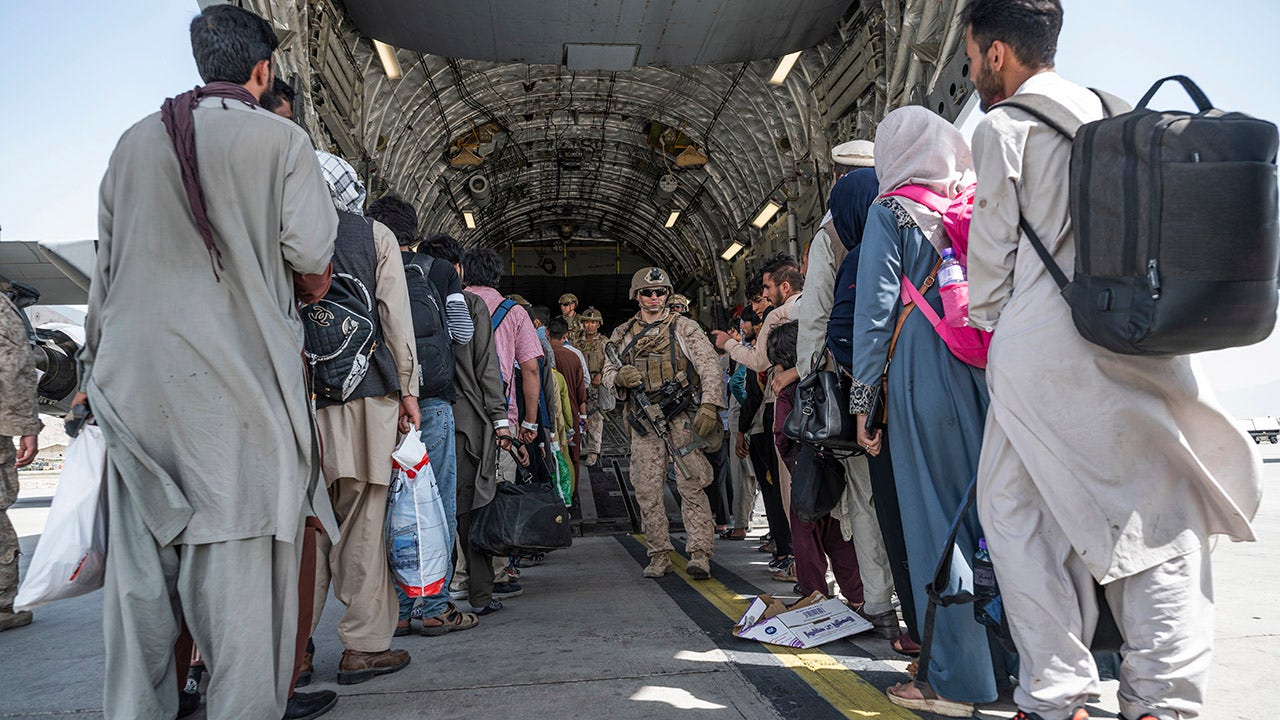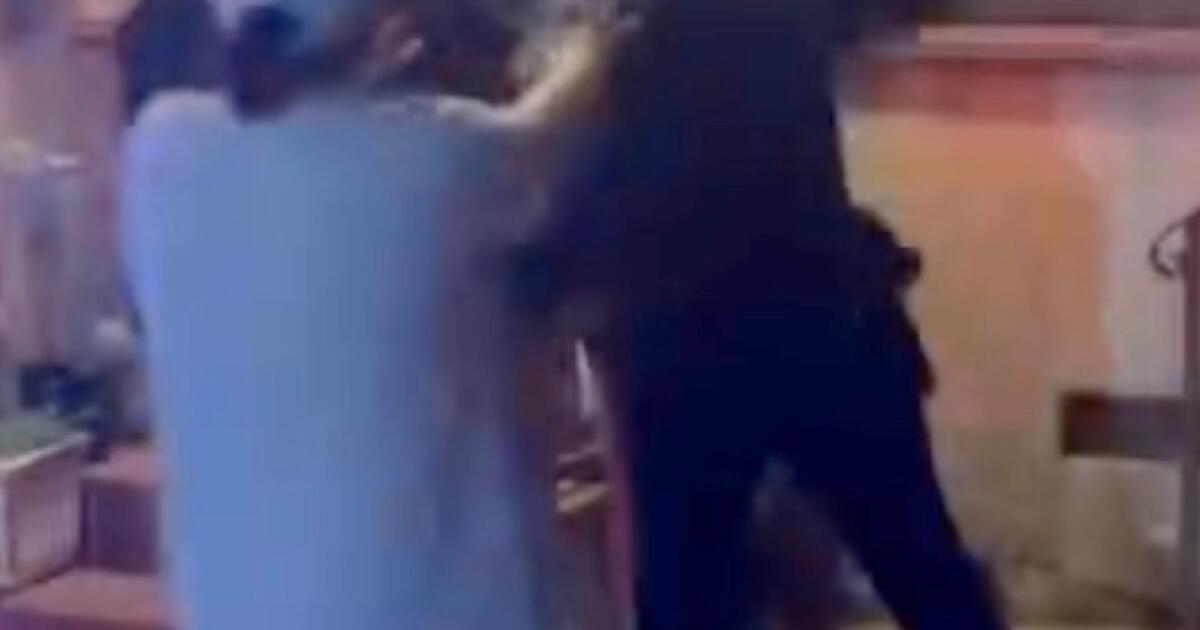It's shaping up to be perhaps the biggest case in the history of the UCLA Police Department: identifying dozens of people who attacked a pro-Palestinian camp in the center of campus last week.
The mob violence was captured live on television, but it took police three hours to put an end to it. Those involved left and no arrests were made.
But the road is not cold.
UCLA detectives are now scanning hundreds of images in an attempt to identify the attackers. They intend to use technology that captures facial images and compares them with other photographs on the Internet and social networks to give names to the faces, according to police sources.
The same technology has allowed police to identify retail theft suspects. It was also the center of the Jan. 6 investigation, in which videos of those who stormed the U.S. Capitol helped the FBI identify many of the attackers and led federal prosecutors to charge more than 1,300 people. In those cases, investigators were often able to find images on social media of the attacker wearing the same clothing as during the attack.
“Technology has turned the entire community into the eyes of law enforcement,” said retired Los Angeles Police Capt. Paul Vernon, who spearheaded an effort after a small disturbance following the Lakers' victory as league champions. NBA in 2010, which resulted in dozens of arrests based on videos, social media posts and security footage. “Photo recognition has become much easier.”
Vernon said an investigator could also collect cell phone data from the immediate area to prove that an individual was there at the time of the incident. In some cases, abusers may have posted on their social media accounts, essentially bragging about their actions. Officers wearing body cameras may have also captured some of the behavior, she said.
The attackers likely arrived in vehicles, so UCLA police will examine data from license plate readers to detect movement near campus early Wednesday. Security cameras on the streets surrounding the campus where they likely parked could provide more clues.
In addition to continued protests, finding those who attacked the camp will be a major challenge for newly installed UCLA associate vice chancellor Rick Braziel, a former Sacramento police chief. Braziel will be tasked with bringing to justice those responsible for what Chancellor Gene Block called a “dark chapter in our campus history.”
Despite the technology, the probe faces obstacles. Some of the attackers wore masks, making them difficult to identify. In those cases, detectives will look for a time before or after the attack when the perpetrators' faces are revealed, an official who was not authorized to publicly discuss the investigation told The Times.
There is also deep anger among some protesters in the camp that it took so long for police to stop the attack. That distrust could take its toll. Many of the students who were injured, some of whom were hospitalized with their injuries, turned to groups such as the Council on American Islamic Relations for Southern California, but have not spoken to campus police.
UCLA is a small police department, so it is reaching out to other agencies and private entities to access the technology needed in the investigation, law enforcement sources said. But so far, UCLA has not issued a public appeal for information on specific suspects.
In the wake of the January 6 attack, the FBI made arrests based on information from family members, co-workers, teammates, former friends and ex-partners after the FBI released photographs of the suspects. An army of politically savvy web sleuths and social media watchers known as “sedition hunters” They also dedicated themselves to identifying the mafia and giving their names to the FBI.
Footage of the UCLA attack is surfacing on Instagram. In one case, a man can be seen using a board to hit a pro-Palestinian protester and then punch and kick others. Dressed in a black sweatshirt, white sweatpants and a black cap, his bearded face is not hidden. Police can use that image to track you or ask for help identifying you.

